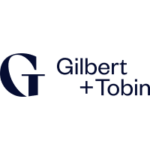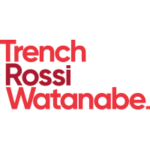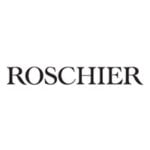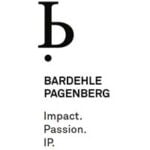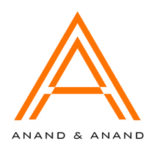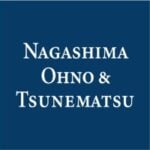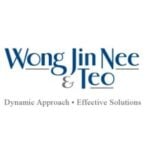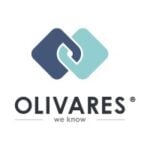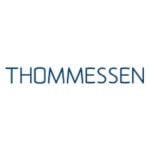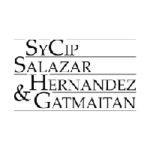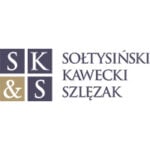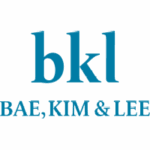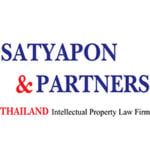-
What is the forum for the conduct of patent litigation?
Patent litigation proceedings in Germany are held before dedicated patent courts. There are 12 designated District Courts (‘Landgerichte’) with specialised patent litigation chambers. These chambers are composed of three legally qualified judges with specific experience and expertise in patent cases. The claimant can choose the forum depending on where the defendant’s place of business is or where the infringing acts took place. Particularly, in the case of infringement by offering for sale on a website (in German or addressed at the German market), this leads to a free choice between any of the 12 District Courts, which is a great advantage for claimants. In general, all German civil courts apply the same procedural rules.
However, the most experienced and therefore most frequented courts in terms of infringement proceedings are located in Munich, Mannheim and Düsseldorf. Since some judicial practice varies between these courts, some courts are more preferable depending on the case at hand. The various venues have certain local specifics, like differing approaches concerning preliminary injunctions, protective orders and the timeline for cases up until the oral hearing.
Importantly, German patent law does not allow the infringement court to decide on the validity of the patent, i.e., to declare a granted patent invalid. Only the German Patent and Trademark Office (GPTO) or the European Patent Office (EPO) in opposition proceedings or the German Federal Patent Court are competent to take a decision to revoke a granted patent or declare it invalid. For this reason, alleged patent infringers usually file oppositions (if still possible, up to 9 months after grant) or nullity actions after being served with an infringement claim; if opposition proceedings are already pending, the alleged infringer can join the pending opposition proceedings. The German Federal Patent Court has six senates dedicated to nullity proceedings. Each senate consists of five judges, three of whom are technically trained and two of whom are legally trained. The technically trained judges are usually former examiners of the German Patent and Trade Mark Office.
This separation of the assessment of infringement on the one hand and validity on the other hand is called “bifurcation” and is a distinguishing feature of German patent law.
-
What is the typical timeline and form of first instance patent litigation proceedings?
Infringement proceedings:
The usual course of first instance infringement proceedings is as follows: After the claimant has filed the complaint with the court, the court serves the complaint on the defendant and sets a deadline for the statement of defence. The claimant has a right to rebut this statement of defence and the defendant can submit a rejoinder before the oral hearing. Oral hearings take a couple of hours and the judges typically introduce into the matter with a more or less detailed initial assessment. Depending on this introduction, the parties are invited to plead. Focus of such pleadings should be the issues identified by the judges. While it is rather common that the court sets a date for issuance of the decision, it is also possible that the court hands down a decision right at the end of the hearing.
Hearing of experts and witnesses is possible, but rather the exception.
The overall duration depends on the venue chosen. For the more popular venues, such as Munich, Düsseldorf and Mannheim, it is fair to say that proceedings take between nine months and 15 months until the oral hearing. A decision is typically handed down within one to two further months. Deadlines for specific writs can be extended. Currently, it seems as if the Unified Patent Court (UPC) has a certain impact on the national proceedings in terms of duration, too. This may be due to the fact that generally, German national patent courts have noted a decline in the numbers of newly filed national patent lawsuits since the opening of the UPC in June 2023, whereby they remain an important venue for lawsuits, in particular in specific sectors such as e.g. the mobile communications sector and with regard to FRAND disputes. Due to the decline in numbers, there is a current trend that proceedings are becoming faster, meaning that especially dates for oral hearings are scheduled earlier within the course of proceedings than before.
During the infringement proceedings, claim construction is considered together with the question of infringement. There are, in particular, no special proceedings for claim construction, such as a Markman hearing.
Concerning liability and damages, it is standard practice to first request a declaratory finding that the defendant is liable for damages together with seeking reliefs for information and rendering of accounts on the scope of infringing activities. Based on this, a second proceeding is initiated to actually determine the damages to be awarded to the claimant.
Nullity proceedings:
The duration of first-instance patent nullity proceedings is approximately two to three years, with the specific timeframe dependent on the technical field of the attacked patent and, thus, the entrusted senate.
The usual course of first instance nullity proceedings is as follows: After the complaint has been filed and served on the defendant, the defendant must formally inform the court within one month of service whether it wishes to defend the patent. Within two months of service of the nullity complaint, the statement of defence is due. An extension of one month is possible if reasonable grounds for this can be presented. The claimant may rebut this statement of defence and the defendant can submit a rejoinder. However, no specific deadlines are foreseen for such briefs.
The court is supposed to provide a preliminary opinion on the validity of the patent in suit based on the prior art and arguments provided so far. Not all of the senates, however, issue such a preliminary opinion within the targeted six months. The timing of the issuance of the preliminary opinion depends on the workload of the respective senate. The court may also provide specific guidance on how to construe the claim/specific features. The preliminary opinion is of particular relevance for the infringement proceedings as it serves as a guiding function on whether the infringement court suspends the proceedings pending the nullity proceedings or not.
The preliminary opinion may contain a time limit within which the parties may comment on it by submitting and filing new arguments/counter-arguments/motions.
Different to infringement proceedings, a decision will typically be issued right at the end of the oral hearing. Until the written decision is handed down, it can take several months.
Witnesses are heard more often in nullity proceedings, in particular if prior use is claimed.
-
Can interim and final decisions in patent cases be appealed?
Interim and final decisions can be appealed in Germany. This is true for both infringement matters as well as nullity matters.
Infringement proceedings:
First instance infringement proceeding decisions can be appealed without permission within one month of service of the decision. The Court of Appeals (‘Oberlandesgericht’) decides on the appeal, which takes usually between 12 and 16 months. Here again, a certain time shift can be seen due to the UPC.
The decision by the Court of Appeals can be further appealed within one month of service if a further appeal has explicitly been permitted by the Court of Appeals. If this is not the case, the defeated party may ask the Federal Court of Justice for permission to appeal.
It is possible to ask for a stay of enforcement of the first instance decision pending appeal. The requirements are, however, very strict for that – naturally, any nullification of the patent in suit is of particular relevance.
Nullity proceedings:
Decisions by the Federal Patent Court in first instance nullity proceedings can be appealed without permission within one month of service of the written decision.
The Federal Court of Justice is competent for any appeals against decisions by the Federal Patent Court. On average, an appeal before the Federal Court of Justice in nullity proceedings takes two to four years.
-
Which acts constitute direct patent infringement?
Direct infringement of product claims is given in cases of manufacturing, offering and putting on the market products that realise all features of the claim and therefore fall within the scope of protection. In addition, the import or possession of patent infringing products for manufacturing, offering and putting on the market also constitutes direct patent infringement. Neither actual knowledge nor intent is required for direct patent infringement. Note that any act in or directed to Germany, e.g. offers from outside Germany to a customer in Germany, can constitute an infringement in Germany.
Direct infringement of method claims is constituted by using or offering a method that falls under the scope of protection of the patent. In the case of a manufacturing method, infringement can also occur if a product is offered, placed on the market or used, which has been obtained by the patented method. Furthermore, the import or possession of the product for the aforementioned purposes also constitutes infringement.
-
Do the concepts of indirect patent infringement or contributory infringement exist? If, so what are the elements of such forms of infringement?
German patent law also provides protection against indirect/contributory patent infringement.
Indirect/contributory patent infringement has objective and subjective components. It requires that essential means for the implementation of the invention are offered or supplied. In subjective terms, indirect patent infringement is given when the infringer knows or it is obvious from the circumstances (e.g. manuals etc.) that the means in question are suitable and intended for implementing the invention.
-
How is the scope of protection of patent claims construed?
The starting point for the claim interpretation is the wording of the claim. The technical meaning, not the literal meaning, of the patent claim is decisive for determining the scope of protection. Within a functional interpretation, the features and terms of the patent claim are to be interpreted in such a way as is appropriate in view of the technical function intended for them according to the disclosed inventive concept.
The description and the figures serve as aids for the claim construction. Dependent claims and preferred embodiments provide indications of how the features of the independent claims are to be construed. In addition, a patent may be its own dictionary, which can become relevant if the description provides for a specific definition of a feature other than its plain and ordinary meaning.
In accordance with the principles established by the Federal Court of Justice, claim construction serves to eliminate ambiguities and to explain the technical terms used therein, as well as to clarify the meaning and scope of the invention described.
The basis of claim construction is the person of skill in the art.
There is no prosecution history estoppel, but courts shall take any submissions by the patent proprietor during the examination proceedings as indication about how a person skilled in the art understands a specific feature.
German law provides for a doctrine of equivalents, which have been established in case law. This test is comprised of three steps: First, the embodiment must solve the problem underlying the invention with means that have objectively the same effect while being modified. Second, the modified means must be obvious to a person skilled in the art at the priority date without any particular inventive considerations based on knowledge of the art. Third, the considerations must be orientated towards the meaning of the teaching protected by the patent claim in such a way that the skilled person will consider them.
-
What are the key defences to patent infringement?
The key defences to patent infringement are:
- Disputing the patent infringement
- Right to use, e.g. based on a licence agreement or prior use
- In SEP matters: FRAND objection
Furthermore, exhaustion, statute of limitation or double protection can also be raised.
Invalidity of the patent can only be raised as a ground for suspending the infringement cases until the Federal Patent Court has decided on the nullity action (or the GPTO/EPO, whichever applies).
-
What are the key grounds of patent invalidity?
The key grounds for invalidity are:
- Lack of novelty
- Lack of inventive step
- Inadmissible extension
- Insufficient disclosure
If a patent claims priority of an earlier application, the question of whether or not the priority has been claimed correctly is of importance, too.
Patent misappropriation is also a ground for invalidation.
-
How is prior art considered in the context of an invalidity action?
The state of the art is held to comprise all knowledge made available to the public before the filing date or priority date of the application, by means of a written or oral description, by use or in any other way. Prior use is not limited to Germany for patent matters. The prior art is considered for novelty and inventive step.
The content of national patent applications and certain European and International patent applications having an earlier filing or priority date, which were made available to the public on or after the filing date or priority date of the later application, is also deemed to be comprised in the state of the art. This prior art, however, is only used to assess the question of novelty, not inventive step.
The Federal Patent Court can examine the prior art ex officio. It is not bound by the pleadings and the motions to take evidence filed by the parties.
-
Can a patentee seek to amend a patent that is in the midst of patent litigation?
The patentee can amend the patent based on the disclosure of the application as filed at any time during first instance nullity proceedings. The amendments, however, must not extend the protection conferred by the patent. Auxiliary requests are also possible to present different lines of defence and/or levels of limitations. Very late filed amendments may be disregarded by the Federal Patent Court, but this is rather an exception.
Since the amendments are made in the course of the nullity proceedings, third parties other than the nullity claimant cannot oppose the amendment. The Federal Patent Court will decide on the amended claims with their decision on the nullity action. A possible outcome of the nullity proceedings, thus, is that the patent is maintained in amended form. If the infringement proceedings had been suspend, the amended claims then form the basis for the further assessment of infringement.
-
Is some form of patent term extension available?
There is no general patent term extension available. For medicinal products and plant protection products, however, a supplementary protection certificate (SPC) may be requested at the German Patent and Trademark Office to compensate for lengthy approval processes. The supplementary protection certificate has the same effects during its lifetime as the patent on which it is based. The SPC system is currently subject to reform efforts at the European level. It remains uncertain whether these negotiations will reach a successful conclusion or whether the reform will, like the SEP Regulation, be abandoned due to the lack of consensus.
-
How are technical matters considered in patent litigation proceedings?
Typically, the judges have to consider technical matters on their own. They may, however, appoint experts that help with specific issues. In patent infringement proceedings, such issues could be, e.g. (i) claim construction, in particular the skilled person’s understanding of a specific term, (ii) configuration of the attacked embodiment or (iii) whether or not a certain feature is implemented in the attacked embodiment. In nullity proceedings, the court may also appoint experts, but the fact that the panel is constituted by technically trained judges, renders this rather a very rare exception. In the end, the court has to come to its own conclusion and may not simply rely on expert opinions.
The parties may also submit expert testimony or offer an expert as a fact witness. Such evidence is, however, seen as a mere substantiation of the party’s pleading, since those experts are not considered to be neutral.
-
Is some form of discovery/disclosure and/or court-mandated evidence seizure/protection (e.g. saisie-contrefaçon) available, either before the commencement of or during patent litigation proceedings?
If sufficient evidence is lacking, a patentee/exclusive licensee is entitled to a claim to inspect devices or processes that allegedly infringe its rights, and any corresponding documentation. Such claim is subject to two major preconditions: The patentee must not be able to make use of other reasonable possibilities to obtain the information / evidence needed, and it must be able to show and prove that there is a “sufficient probability” that the patent has acutally been infringed.
This inspection claim can be enforced rapidly. In inspection proceedings, the applicant has to explain to the court what it specifically needs to demonstrate infringement and basically define the scope of the inspection/production. This can even result in the attacked embodiment being destroyed for the purpose of inspection/production, if that is necessary.
The court will appoint an expert to perform the inspection and issue an expert report on the question of infringement. This report is to be kept confidential and subject to attorney’s eyes only until release upon order of the court.
The party is basically free to initiate proceedings after the inspection proceedings have been concluded.
Beyond that, a party may, under certain requirements, also request that the other side produces documents, that are (solely) in their possession, on the basis of the German Code of Civil Procedure.
-
Are there procedures available which would assist a patentee to determine infringement of a process patent?
As described above, German law provides for an inspection claim, which allows a party to determine whether a patent is infringed or not.
Beyond that, depending on the actual attacked embodiment at stake, one may derive from a product whether a process patent has been infringed.
In general, it is the claimant’s burden to show and prove infringement. If the claimant has provided sufficient indications for the patent infringement, it is up to the defendant to substantively challenge this. This can also result in the defendant having to describe and explain the process used.
-
Are there established mechanisms to protect confidential information required to be disclosed/exchanged in the course of patent litigation (e.g. confidentiality clubs)?
German courts can order for specific protection of confidential information. Such orders can define confidentiality clubs, exclude third party access (e.g. via file inspection) and also sanction any violation of the protective orders.
According to European requirements, at least one party representative needs to have access (no attorney’s eyes only limitation).
-
Is there a system of post-grant opposition proceedings? If so, how does this system interact with the patent litigation system?
There is a system of post-grant opposition proceedings in Germany. These can be initiated by anyone before the European Patent Office in the case of European patents or the German Patent and Trademark Office in the case of German national patents. The deadline is identical: nine months upon grant. In fact, a nullity action cannot be filed as long as a notice of opposition can still be filed or opposition proceedings are still pending. This is, however, different in the UPC regime, which allows for parallel nullity actions and oppositions.
One line of defence in patent infringement cases is requesting a stay due to invalidity of the patent in suit. The infringement court will decide on this question based on the likelihood of success of the opposition (or nullity proceedings). If the court considers it highly likely that the patent will be declared invalid, it will suspend the infringement proceedings (or enforcement of a first instance decision).
German infringement courts are said to be rather reluctant in suspending the infringement proceedings. As a rule of thumb, one can expect a suspension if a document is clearly novelty destroying.
To the extent that isolated revocation actions may be pending before the UPC, the German infringement court would likely apply the same approach and consider the chances of invalidation if confronted with a request to suspend in light of the UPC revocation action.
-
To what extent are decisions from other fora/jurisdictions relevant or influential, and if so, are there any particularly influential fora/jurisdictions?
German courts have to consider relevant decisions from other fora/jurisdictions, but are not bound by decisions of courts from other jurisdictions. Any deviation must be justified accordingly, though. Should, however, the UPC for instance invalidate a patent, this will have a direct impact on the German parallel infringement matter.
-
How does a court determine whether it has jurisdiction to hear a patent action?
German courts determine their jurisdiction depending on whether a German patent or a European patent with effect in Germany is asserted. Furthermore, there needs to be an infringement in Germany (which could also be any act from outside Germany targeting an entity in Germany, such as an offer).
German courts do not grant anti-suit injunctions, but anti-anti-suit injunctions as a reaction to any foreign anti-suit injunction.
-
What are the options for alternative dispute resolution (ADR) in patent cases? Are they commonly used? Are there any mandatory ADR provisions in patent cases?
There are no mandatory ADR provisions in patent cases. The parties are free to agree on ADR.
German courts are supposed to ask the parties at the beginning of any hearing whether there is a chance to settle amicably.
In addition, certain courts offer a mediation program – such as e.g. the District Court Munich.
-
What are the key procedural steps that must be satisfied before a patent action can be commenced? Are there any limitation periods for commencing an action?
In Germany, there is no requirement to send a warning letter or any other sort of alert to the other side before commencing an action (note that there are specifics that apply to SEP matters).
From a risk perspective, it is advisable for claimant to investigate and procure all facts and evidence of the infringement in detail prior to the litigation. As there are no disclosure obligations, it is up to the claimant to present a substantiated case in the statement of claim, including any evidence (German proceedings are “front-loaded”).
Damages can be claimed without informing the other side about the infringement. There is also no patent-marking requirement.
German law does, however, stipulate limitation periods. Standard terms are 3 years and 10 years, depending on the actual knowledge of the infringement.
-
Which parties have standing to bring a patent infringement action? Under which circumstances will a patent licensee have standing to bring an action?
The rights conveyed by a patent can be exercised by the patent proprietor or the exclusive licensee in their own name. As an exclusive licensee, solely the licensee has the right to exercise any rights conveyed by the patent.
A non-exclusive licensee can only assert a patent if it is authorised to do so by the patent proprietor.
The proprietor is not required to join the action of any licensee. If the defendant responds with a nullity action or opposition, this will naturally be directed at the patent proprietor.
-
Who has standing to bring an invalidity action against a patent? Is any particular connection to the patentee or patent required?
For as long as the patent is still in force, any individual is entitled to initiate invalidity proceedings without any specific requirements. Therefore, depending on the specific situation, sometimes nullity proceedings are initiated by a strawman, i.e. a party acting in its own name but covertly on behalf of a third party.
After the lapse of the patent, a specific interest needs to be shown by the claimant, which typically is fulfilled if infringement proceedings are pending.
-
Are interim injunctions available in patent litigation proceedings?
Interim injunctions (or preliminary injunctions) are available in German patent litigation proceedings and their use is effective in obtaining an enforceable court decision within a relatively short timeframe, typically days or weeks.
The requirements are very strict and depend on the individual court and its case law. The claimant has to prove that there is a clear infringement. The patent or utility model must also be valid. Considering the latter, the different venues have long applied slightly different approaches to establish whether the validity has been sufficiently proven. Following the European Court of Justice’s (CJEU’s) ruling in Phoenix Contact/Harting, there was intense debate about the impact this ruling would have on the issuance of preliminary injunctions by German courts. What can be said is that the presumption of validity established by the CJEU does at least not give rise to the presumption that the grounds cited against patentability will not prevail, i.e., that the patent will continue to be legally valid in the event of an attack on its legal validity. Further, special constellations and the particularities of the case will still be taken into account (e.g. in generic cases).
Furthermore, interim injunctions are only granted if the matter is urgent. Hence, the patentee must act swiftly in and after gaining knowledge of the infringement. German courts apply different urgency periods, which also sometimes depend on the complexity of the matter. The standard urgency period is one month.
The interim injunctions can be granted inter parte (including an oral hearing) or ex parte. Ex parte injunctions are granted only in exceptional cases, e.g. tradeshows, and the German Constitutional Court has ruled that ex parte injunctions in intellectual property matters shall only be issued if the other side has received a warning letter beforehand.
In particular in ex parte cases, courts can and do oblige the claimant to provide a security deposit as a condition of enforcing the interim injunction to compensate for damages in case the interim injunction is lifted afterwards.
-
What final remedies, both monetary and non-monetary, are available for patent infringement? Of these, which are most commonly sought and which are typically ordered?
In the event of patent infringement, claimants can and do regularly pursue the following remedies in the main proceedings:
- Injunctive relief: A permanent injunction for the remaining lifetime of the patent
- Information and rendering of accounts: In order to receive information on the scope of the infringing acts, which is necessary for calculating damages
- Damages: A declaratory ruling on the obligation to pay damages, in order to stop the statute of limitation from running and as a basis for the following damage proceedings based on the accounting and information rendered
- Destruction: The destruction of infringing products which are in possession or owned by the infringer
- Removal: The removal from distribution channels
If the court finds infringement, all of these remedies are typically ordered.
Nevertheless, it can be said that by far the most important remedy available under German patent law is the permanent injunction, by which the defendant is ordered to completely refrain from engaging in acts that have been found to infringe the patent in suit. Moreover, all such acts that fall within the scope of the judgment for the same reasons, relying exclusively on the considerations of that judgment, are prohibited. Thus, minor modifications of the attacked embodiment, if they still fulfill the features of the patent claim as construed in the reasoning of the decision, will not suffice to avoid infringement (“core theory”).
-
On what basis are damages for patent infringement calculated? Is it possible to obtain additional or exemplary damages? Can the successful party elect between different monetary remedies?
In German patent infringement cases, the claimant can freely choose between the following methods of calculation:
- Lost profit
- Fictitious license
- Infringers profit
German law does not provide for punitive damages, but allows collecting damages based on sales with accessories of the infringing variant (product or method), if those are causally linked to the infringement.
-
How readily are final injunctions granted in patent litigation proceedings?
The German patent act provides for a proportionality test. However, final injunctions are basically automatically ordered if the court finds infringement. Only in exceptional circumstances, injunctive relief will not be ordered. In those cases, a compensation would have to be paid in lieu of the injunction.
-
Are there provisions for obtaining declaratory relief, and if so, what are the legal and procedural requirements for obtaining such relief?
German law provides for seeking declaratory relief, but only insofar as no specific performance, such as to cease and desist, provide accounting etc. is possible. A standard example of declaratory relief would be the declaratory finding for damages.
An alleged infringer may, for as long as no infringement action is pending, seek for declaratory relief for non-infringement. This would automatically turn inadmissible, once countered with an infringement claim.
-
What are the costs typically incurred by each party to patent litigation proceedings at first instance? What are the typical costs of an appeal at each appellate level?
Costs vary in particular depending on the complexity of the matter and the firms involved. On appellate level, costs are basically identical. Concerning the court fees and reimbursable attorney fees (see below), the so-called value in dispute of the matter is decisive. This value in dispute is supposed to reflect the interest of the claimant in the matter. The claimant will provide a suggestion with the complaint and the court will make a final determination.
-
Can the successful party to a patent litigation action recover its costs?
The key principle is: the losing party bears all the costs. Therefore, in general, the successful party can recover its costs of the lawsuit up to the statutory fees. However, costs which exceed the statutory fees have to be borne by each party. This is the case for costs being charged on an hourly basis, for example. In addition to lawyers’ fees and court costs, other costs are recoverable if they were necessary for the assertion or defence of rights.
The reimbursable costs for German proceedings are relatively predictable as they are regulated by law. The court fees, the lawyers’ fees and the patent attorney fees are calculated according to a formula based on the value in dispute. These fees are the basis for the reimbursement of costs.
In accordance with German procedural law, the party submitting an application or initiating legal proceedings is required to make an advance payment of the full court fees.
-
What are the biggest patent litigation growth areas in your jurisdiction in terms of industry sector?
In Germany, patent litigation growth is, despite the rise of the UPC, still strong in the telecommunications and automotive sectors, driven by disputes over standard-essential patents (SEPs) and connected-vehicle technologies. FRAND licensing issues continue to generate a high volume of cases, especially before the District Court of Munich, but also before the Districts Courts of Mannheim and Düsseldorf. The life sciences and pharmaceutical sector also remains active, particularly in biologics and biosimilars and with regard to SPC disputes. Emerging areas include green technologies, battery innovations, and semiconductors, reflecting broader industrial and sustainability trends. Overall, Germany remains a leading venue for high-value, technology-driven patent disputes in Europe.
-
What do you predict will be the most contentious patent litigation issues in your jurisdiction over the next twelve months?
FRAND (Fair, Reasonable and Non-discriminatory) and Standard Essential Patents (SEPs) cases are still some of the most contentious patent litigation issues and will be over the next twelve months. Particularly Munich will remain a focal point for SEP enforcement and FRAND-defence skirmishes.
-
What are the biggest challenges and opportunities confronting the international patent system?
The interaction and long-term effects of the coexistence between the UPC, which was established in June 2023, and the national German patent courts, especially with respect to the case numbers and the often quoted “brain drain” from the national patent courts to the UPC, will become more and more apparent. Certainly, both challenges and opportunities will result from them.
Another big challenge and opportunity at the same time regarding the international patent system is the growing influence of artificial intelligence (AI). AI will influence international patent law in the coming years, not only in terms of content but also in terms of its processes. In substantive patent law, new questions such as AI-generated/assisted inventions need to be dealt with. However, this could also be an opportunity in terms of overcoming backlogs of patent applications in patent offices and could also enable a faster development in collecting prior art.
Germany: Patent Litigation
This country-specific Q&A provides an overview of Patent Litigation laws and regulations applicable in Germany.
-
What is the forum for the conduct of patent litigation?
-
What is the typical timeline and form of first instance patent litigation proceedings?
-
Can interim and final decisions in patent cases be appealed?
-
Which acts constitute direct patent infringement?
-
Do the concepts of indirect patent infringement or contributory infringement exist? If, so what are the elements of such forms of infringement?
-
How is the scope of protection of patent claims construed?
-
What are the key defences to patent infringement?
-
What are the key grounds of patent invalidity?
-
How is prior art considered in the context of an invalidity action?
-
Can a patentee seek to amend a patent that is in the midst of patent litigation?
-
Is some form of patent term extension available?
-
How are technical matters considered in patent litigation proceedings?
-
Is some form of discovery/disclosure and/or court-mandated evidence seizure/protection (e.g. saisie-contrefaçon) available, either before the commencement of or during patent litigation proceedings?
-
Are there procedures available which would assist a patentee to determine infringement of a process patent?
-
Are there established mechanisms to protect confidential information required to be disclosed/exchanged in the course of patent litigation (e.g. confidentiality clubs)?
-
Is there a system of post-grant opposition proceedings? If so, how does this system interact with the patent litigation system?
-
To what extent are decisions from other fora/jurisdictions relevant or influential, and if so, are there any particularly influential fora/jurisdictions?
-
How does a court determine whether it has jurisdiction to hear a patent action?
-
What are the options for alternative dispute resolution (ADR) in patent cases? Are they commonly used? Are there any mandatory ADR provisions in patent cases?
-
What are the key procedural steps that must be satisfied before a patent action can be commenced? Are there any limitation periods for commencing an action?
-
Which parties have standing to bring a patent infringement action? Under which circumstances will a patent licensee have standing to bring an action?
-
Who has standing to bring an invalidity action against a patent? Is any particular connection to the patentee or patent required?
-
Are interim injunctions available in patent litigation proceedings?
-
What final remedies, both monetary and non-monetary, are available for patent infringement? Of these, which are most commonly sought and which are typically ordered?
-
On what basis are damages for patent infringement calculated? Is it possible to obtain additional or exemplary damages? Can the successful party elect between different monetary remedies?
-
How readily are final injunctions granted in patent litigation proceedings?
-
Are there provisions for obtaining declaratory relief, and if so, what are the legal and procedural requirements for obtaining such relief?
-
What are the costs typically incurred by each party to patent litigation proceedings at first instance? What are the typical costs of an appeal at each appellate level?
-
Can the successful party to a patent litigation action recover its costs?
-
What are the biggest patent litigation growth areas in your jurisdiction in terms of industry sector?
-
What do you predict will be the most contentious patent litigation issues in your jurisdiction over the next twelve months?
-
What are the biggest challenges and opportunities confronting the international patent system?
